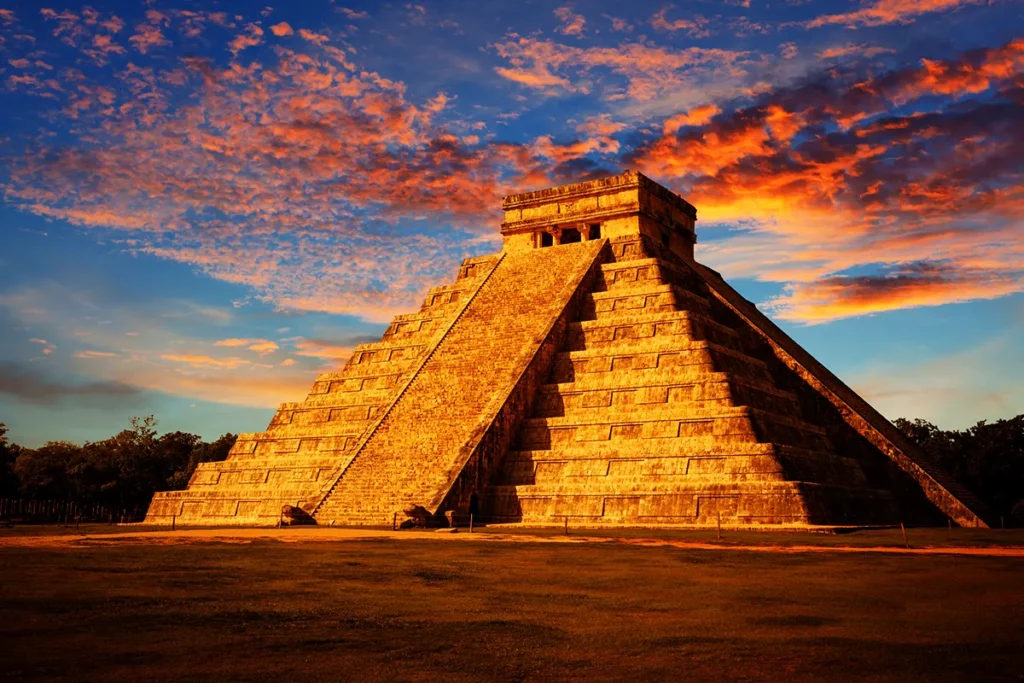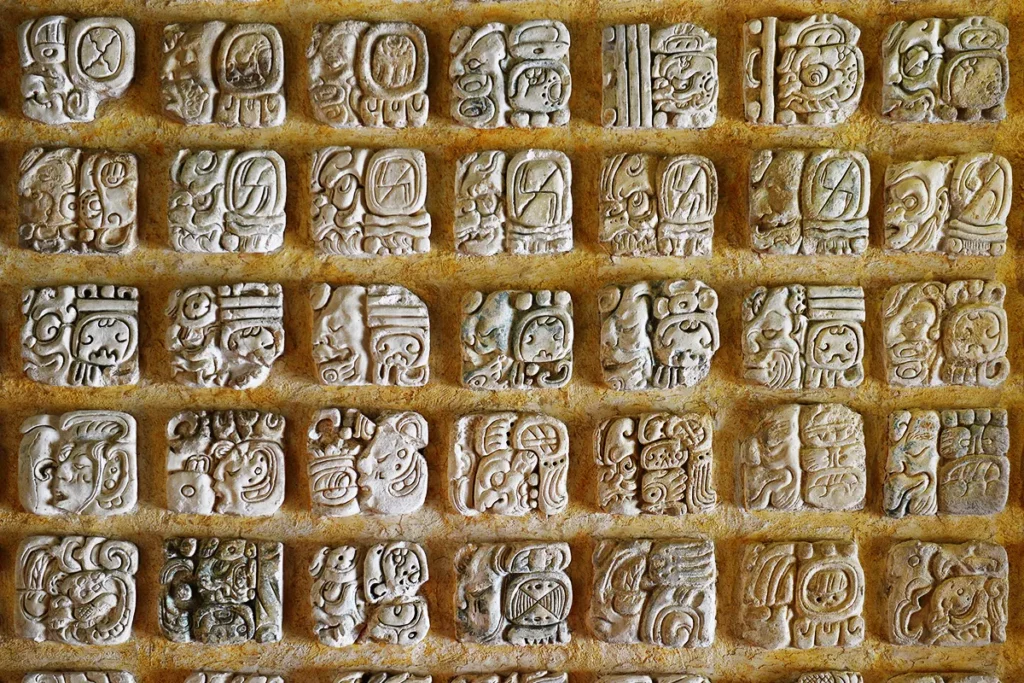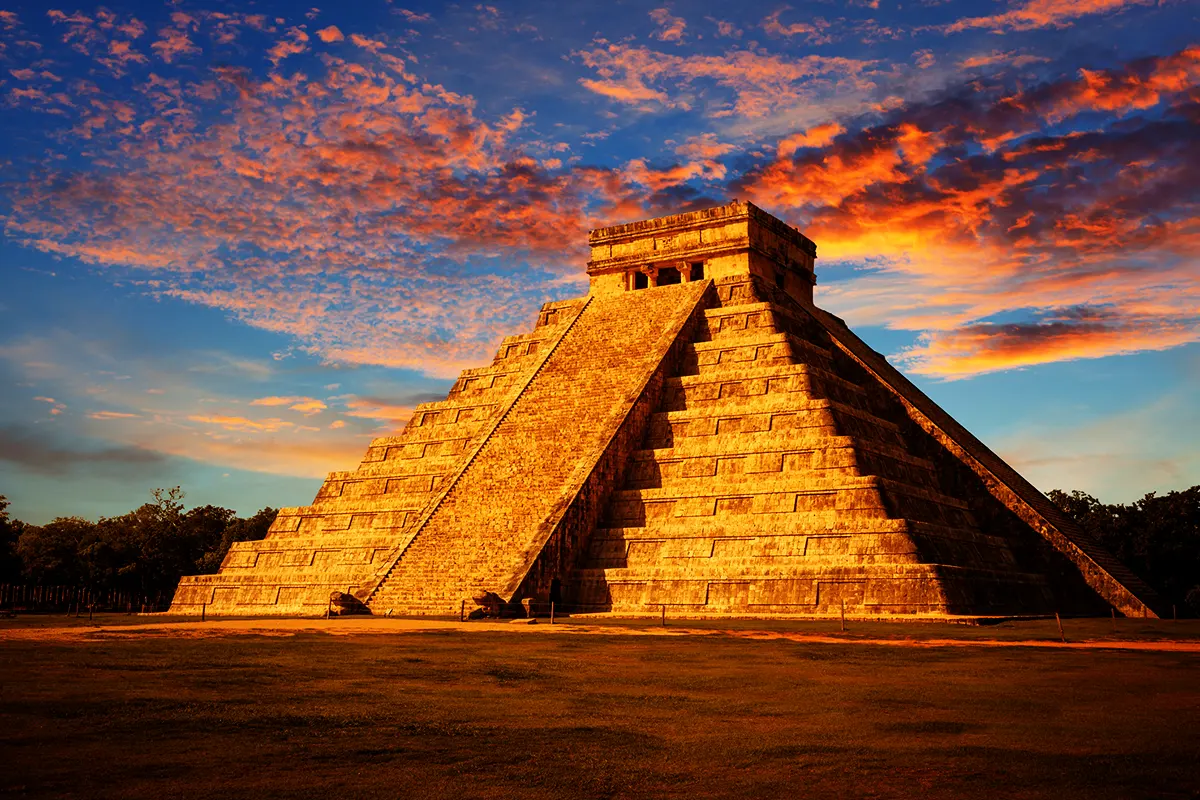
The Yucatec Mayan language, once spoken in the ancient sprawling cities of Chichen Itza and Mayapan will now be available on uTalk! That’s right – history lovers, culture vultures and fans of Mesoamerica can now learn the Yucatec Mayan language (and yes – the language of Namor and the fictional underwater kingdom of Talokan from the latest Black Panther movie).
A living, vibrant language – but for how much longer?
Yucatec Mayan is spoken by over 800,000 people in Mexican states of Yucatán, Quintana Roo and Campeche, all located in the lush Yucatan peninsula. It is a member of the Mayan languages, and has relatives spoken all across Mesoamerica.
In the Yucatan peninsula, Yucatec Mayan, known by native speakers as Máayaʼ Tʼáan is still actively spoken by elders in many towns and villages but less and less among younger generations, who increasingly prefer speaking in Spanish.
While this could one day spell the end of the language, there is hope. Some schools in the region now teach the language. Furthermore, uTalk is the first language-learning app to offer subscribers a chance to learn this fascinating language FROM any language already available on the app!
In other words, you do not have to be fluent in Spanish in order to learn Yucatec Mayan on uTalk! You can simply learn it directly from English or any of the 153 languages currently available on the app.
Some interesting features
One of the benefits of learning a language with uTalk is the fact you can hear phrases and words spoken by native speakers. And you’ll probably notice some interesting sounds.
Yucatec Mayan, like most Mayan languages has ejective consonants – written like P, T, K, TS and CH followed by an apostrophe. These sounds require you to “pop” the sounds out from your mouth while enunciating them!
You can hear an ejective K’ and P’ in the following sentence:
In k’áat jump’éel káafe.
(I’d like a coffee, please.)
And you can hear it, courtesy of our amazing native voice talents, on the Yucatec Maya store page.
Tones
Yucatec Mayan is one the very Mayan languages that has tones. Like in Chinese and Vietnamese words pronounced with slightly different melodies can have totally different meanings.
Míis basically pronounced like “MEESE” with a high falling tone – where your voice goes from high to low as you pronounce the word – means “broom” or even, “to sweep”.
Meanwhile, the same word pronounced with a low, flat tone – you keep your voice low and steady while pronouncing the word – means “cat”!
So, in order to avoid confusing your cat with your broom, do pay attention to our voice talents and try to take note of this fascinating use of tone.
Writing
Sadly the spectacular traditional Mayan Script, so ubiquitous on the walls of the great temples and pyramids, is no longer in use. Modern Yucatec Mayan is now written in the Latin alphabet, introduced centuries ago by Spanish missionaries.
Which is a pity because the old script was one of the most interesting forms of writing invented by humans. Imagine writing with a mixture of glyphs representing whole words – in combination with smaller ones that told us how they were pronounced!

Conveniently, the modern Yucatec writing system not only uses our ABCs, it’s really consistent and every word is pronounced as it is written. Easy, right?
The five vowels in Mayan – A,E,I,O and U are pronounced like in Spanish. As long as care is taken to pronounce the long vowels really long, with the accompanying tones and the ejective consonants mentioned above – reading and speaking Yucatec Mayan is incredibly simple and straightforward. Also, “X” represents a “SH” sound like in “ship” or “sharp”. And as in Spanish, “J” sounds more like a heavy “H” sound.
Counting in Mayan
Mayans traditionally counted in twenties. “Forty” was “two twenties”, “sixty” was “three twenties” and “100” was “five twenties”. But what’s interesting is that modern Yucatec Mayans no longer use the numbers except when counting one to four!
For numbers above four, Spanish is more commonly used instead.
More fun facts
If you’re wondering where the words “Yucatan” and “Yucatec” come from – don’t worry because we don’t either!
The origins of the word “Yucatan” are disputed to this day.
Some historians believe that the first Spaniards to arrive in the region tried asking the locals what they called their land. The local Mayans, unable to understand Spanish, said “I don’t understand” or something similar. The Spaniards misheard it as “Yucatan” and the name has been in use ever since.
Other historians believe “Yucatan” is somehow related to the “yuca” or “cassava” plant that grows abundantly there.
Still others believe it might be a borrowing from a neighbouring tribe and it was a word they used to refer to Mayans and their language.
Wait, “shark” could be Mayan?
Yucatec Mayan may have contributed a very common word into the English language. And that word might just possibly be “shark”!
One theory is that the word “shark” originated from the Yucatec Mayan word “xoc” (there’s that X sound again – remember it sounds like SH) meaning “fish”.
What do you think?
So, what are you waiting for?
Language, history and culture go hand in hand and what better way to explore a region than to immerse oneself in its original ancient tongue. Whether you’re planning to travel to Mexico (ever heard of Cancun, Tulum or Chichen Itza?) or are just an avid history buff or just happen to be curious, learning Yucatec Mayan might just be the thing for you!
